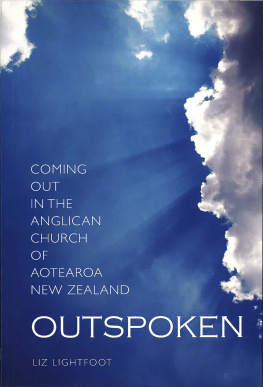Contents
Preface
1. Personal Stories and Sexuality 1
Personal Stories
The Book's Organization
Developmental Themes: Similar or Unique?
Continuities and Discontinuities Turning Points
Differential Developmental Trajectories
The Current Study
The Researcher
Summary of Group Findings
A Final Reflection
2. Childhood: Memories of Same-Sex Attractions 21
Captivation with Masculinity Acting Like a Girl Not Acting Like a Boy Acting Like a Boy
Reflections on the Childhood of Gay/Bisexual Youths
3. Labeling Feelings and Attractions 47
Puberty and Its Effects
Prepubertal Awareness
Pubertal Onset Awareness
Awareness during Puberty and Beyond
Girls and Girlfriends
Verbal Ridicule during Adolescence
Reflections on Labeling Attractions as Homoerotic
First Gay Sex 67
First Gay Sex
First Gay Sex during Childhood
First Gay Sex during Early Adolescence
First Gay Sex during Middle Adolescence
First Gay Sex during Young Adulthood
Gay Virgins
Reflections on First Gay Sex
5. First Heterosexual Sex 97
First Heterosexual Sex
First Heterosexual Sex during Childhood
First Heterosexual Sex during Early Adolescence
First Heterosexual Sex during Middle Adolescence
First Heterosexual Sex during Young Adulthood
Reflections on First Heterosexual Sex
6. Labeling Self as Gay or Bisexual 121
Self-Identifying as Gay or Bisexual
Childhood and Early Adolescence
The High-School Years
The College Years
Reflections on Self-Identifying as Gay or Bisexual
7. Disclosure to Others 141
Disclosure to Others
Disclosure during Adolescence
Disclosure during Young Adulthood
Reflections on First Disclosures
8. First Gay Romance 159
Characteristics of First Gay Romances
First Relationship during Adolescence
Age-Discrepant Relationships
Reflections on Same-Sex Romances
9. Positive Identity 181
The Youths' Narratives
Self-Assessment
Heterosexual Friends
Gay Friends
Exposure to Gay Culture/Communities
Romantic Relationships
Educational Material
Early Awareness
Youths Struggling to Feel Positive
Suicide Risks
Reflections on a Positive Identity
10. Ethnic Youths 203
African American Youths
Latino Youths
Asian American Youths
Reflections on Ethnic Youths Who Are Gay/Bisexual
11. The Diversity of Gay Youth 221
Differential Sequences of Developmental Milestones
Further Evidence for Gay Diversity
Final Reflections
Notes
Preface
M any gay and bisexual youths struggle for years to understand why they, of all boys their age, do not seem to fit in. During childhood and adolescence they may have felt and perhaps behaved differently, had persistent same-sex attractions that would not disappear despite vigorous efforts, and weathered the snide remarks of peers who seemed to know better than they did what they were. Then, the deniable became undeniable and suddenly all made sense. This was the experience of one particular youth who provided the title for this book. During his interview he spoke of battling to comprehend and defy his self-professed demonshis sexual fantasies of men. He finally stopped fighting and concluded, and then I became gay. Never again would he pretend to himself that he was anything but gay. For him, becoming gay meant adopting a sexual identity or label that was consistent with and reflected his sexual orientation.
At the time of his revelation this youth was relatively unsophisticated about how he got to be gay or why he had to be the one who turned out gay. Like so many other youths, his sexuality simply felt natural, as much a part of him as his love of beauty and my music playing. Being gay was not something that he had planned or would have selected for himself if given a choice, and he made repeated attempts during his childhood and early adolescence to convince himself that this could not possibly be the definitive outcome of his sexuality. He wanted better for himself. He wanted an easier life. But he also knew that he had no choice in the matter. Once he gave himself up to this genuine gay self he increasingly experienced happiness and self-acceptance. He ultimately came to celebrate his sexuality because of the uniqueness it bestowed on his life.
This youths preadult years may have been common, but they certainly were not universal. Other youths knew from birth that their attractions were solely directed to other males; once they had the cognitive capacity to understand that this meant gay, they were gay. The decisions to disclose this to others and to sexually act on their attractions were often independent of self-recognition and selfacceptance as gay. As adolescents, some gay/bisexual youths engaged girls in sex and romanceat varying ages, for singular or multiple occasions, and for an assortment of reasons. The same variability could also be noted in their child and adolescent sex with other boys and men.
This multiplicity or heterogeneity in the developmental trajectories of gay and bisexual youths is the most explicit theme of this book. During childhood, adolescence, and young adulthood the youths I interviewed lived both ordinary and intricate lives; as similar and dissimilar as their heterosexual peers; and, ultimately, as diverse as we would expect them to be. We would recognize many of them as our sons, brothers, grandsons, nephews, cousins, friends, and boys next door; others would be strangers to us.
The perspective that I propose in this book to account for this richness of diversity in the lives of gay and bisexual youths is differential developmental trajectories. The continuity and discontinuity in individual lives and the turning points that redirect or rechannel the meanings of experiences and feelings are the infrastructure for this conceptualization. In some respects, gay and bisexual youths are similar to all other contemporary adolescents, as well as like no other one who has ever lived. Gay/bisexual youths share commonalities that separate them from their heterosexual peers; they also diverge among themselves in their pathways to a sexual identity.
A second major objective of this book, perhaps more implied than explicitly argued, is to challenge the ways in which our culture thinks about sexual minority youths. We have imaginations of what it means to grow up gay during this historic time, and this is conveyed in no uncertain terms through religion, educational institutions, and the media. Sexual-minority youths are portrayed as victimized, suicidal individuals with low self-esteem who struggle to cope with an unwieldy modern universe that despises them and gives little hope that a good life can come to them. These beliefs in turn can affect the self-perception of gay youths and their expectations about the life they will have to lead. Despite the dearth of supporting scientific literature, educators, mental health care providers, parents, and sexual-minority youths often erroneously assume that gay/bisexual youths are inherently psychologically vulnerable. Researchers have been of little help in redressing this stereotype.
Too often ignored are the strengths and accomplishments of sexual-minority youths. In closing my previous book on gay youths, Gay and Lesbian Youth: Expressions of Identity (1990), I made this point in a section titled The Promise of Lesbian and Gay Youth. I wish to reiterate the main points here because of their pertinence to the lives recounted in this book.
[Many] accept their homosexual feelings and attractions and lead successful, productive, nonneurotic lives as self-acknowledged gay men and lesbians. But social scientists, including lesbian and gay researchers, have focused almost exclusively on the problems at the expense of the promises of lesbian and gay youths. It is perhaps surprising that the results of the current study presented lesbian and gay adolescents as essentially psychologically and socially healthy individuals ... [The research] does present another side of being young and gaya positive and promising period of the life course. I believe that we need to say this loudly and clearly and to support it in the pages of our professional journals and in the media, such that we and our youth can hear it and believe it. (pp. 182,185)




